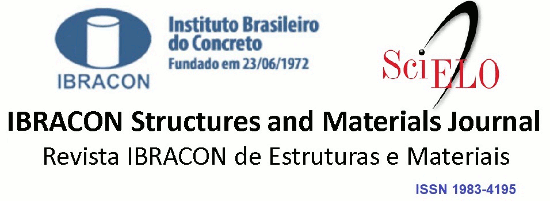Resumo
Este estudo tem como objetivo avaliar a influência da adição de esporos de B. subtilis AP91 nas propriedades mecânicas de argamassas. Para tanto, a bactéria B. subtilis AP91 isolada de folhas de arroz da variedade agulha precoce foi utilizada na concentração de 105 esporos/mL em argamassas com traço de 1:3 (em massa) e relação água/cimento (a/c) de 0,63. Os esporos bacterianos foram adicionados de duas diferentes formas: na água de amassamento e por imersão em solução contendo os esporos. A análise por Microscopia Eletrônica de Varredura (MEV) com Sistema de Energia Dispersiva (EDS) mostrou cristais com picos de cálcio, o que possivelmente indica a presença de carbonato de cálcio bioprecipitado. Os resultados obtidos a partir da análise mecânica mostraram que a bioprecipitação de CaCO3 pela bactéria B. subtilis AP91 foi satisfatória, particularmente quando os esporos foram adicionados à água de amassamento, aumentando a resistência à compressão em até 31%. Portanto, conclui-se que a adição de esporos de B. subtilis AP91 na água de amassamento das argamassas induziu a biocimentação, que aumentou a resistência à compressão. A bioprecipitação de carbonato de cálcio pode ter outras consequências benéficas, como o fechamento de poros e fissuras em materiais cimentícios, que poderiam melhorar a durabilidade, embora mais pesquisas neste aspecto ainda sejam necessárias.
Palavras-chave:
carbonato de cálcio; biocimentação; B. subtilis; propriedades mecânicas; MEV

 Efeitos da biocimentação promovida por Bacillus subtilis nas propriedades mecânicas de argamassas
Efeitos da biocimentação promovida por Bacillus subtilis nas propriedades mecânicas de argamassas




